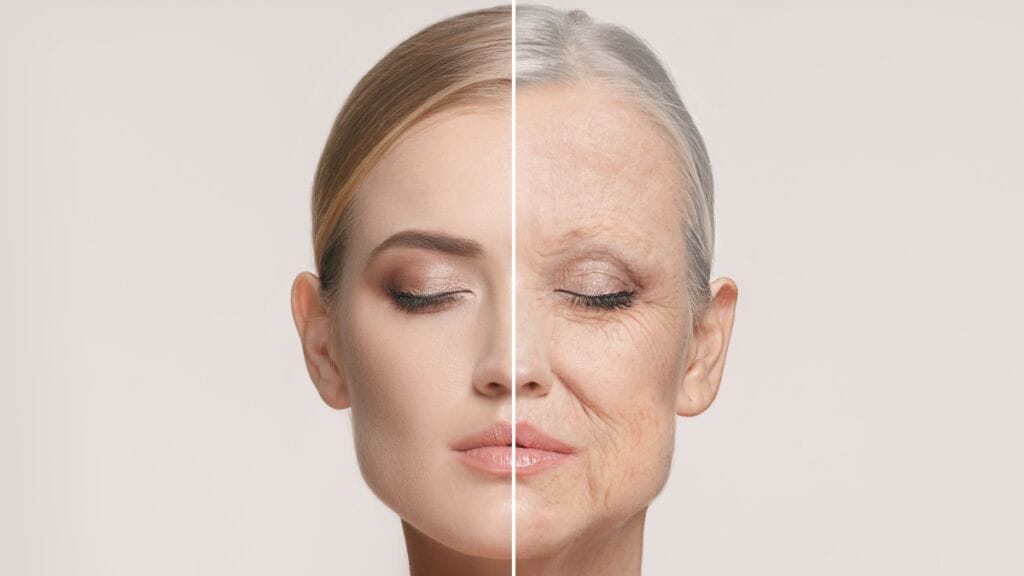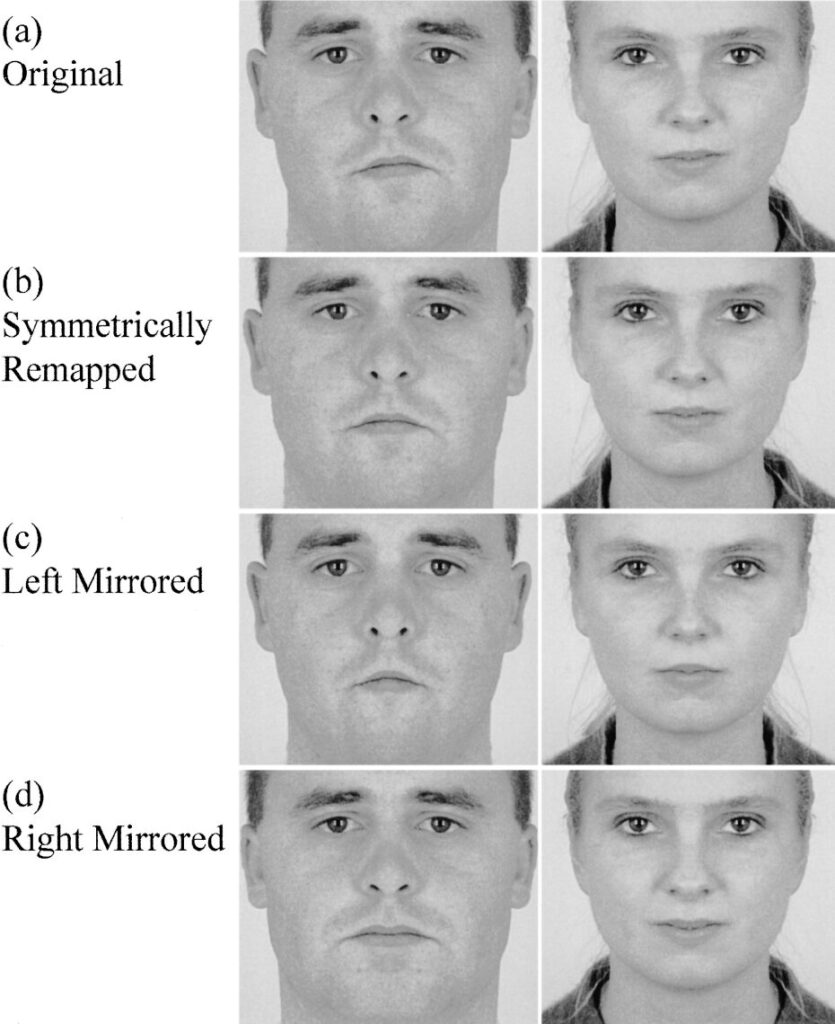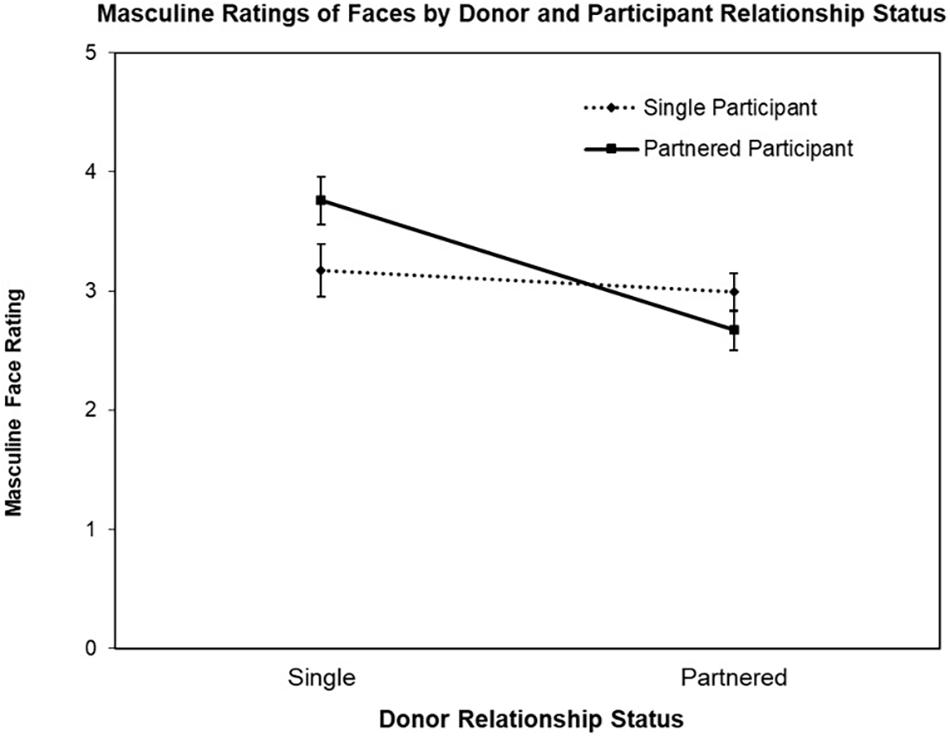「結局、世の中見た目だぜ」
「ただしイケメンに限る」
「美人は得」
確かに、外見が優れている人は人生イージーモードな気がしますし、自分もそうなりたい!と思った方も多いのではないでしょうか。

マジでイケメンに生まれたい人生だったわ。
来世はキムタクで頼むぜ、カミサマ…!!

確かに外見の大部分は、残念ながら遺伝で殆ど決まってしまっているんだ。
外見は先天的なものであり、後天的に作ることは難しいと感じている方も多いのではないでしょうか。
実際、外見的な要素は遺伝で殆ど決まってしまっています。言い換えれば、外見は先天的に決められてしまっており 自分の力ではどうしようもないのです。

更に残酷な事実が存在します。
1966年ウォルスターらの実験によると、もう一度デートをしたいかどうかを決定する要素の中で外見のみが相関関係にあったことが判明しています。
The only important determinant of S’s liking for his date was the date’s physical attractiveness.
Importance of physical attractiveness in dating behavior.
この研究でが、大学主催の「ランダム・ダンスパーティ」で出会った男女を対象に、初対面後に「また会いたいか」を調査することで調べられました。
最もデートに行きたいという意欲を強く予測したのは外見魅力であり、性格・知性・社会的特徴など他要因はほとんど寄与しませんでした。初期段階の恋愛選好において、外見が圧倒的なゲートキーパーとして機能することを示した古典的研究です。
特に今回の実験では、
男性が女性とまたデートに行きたいと考えるかどうかと外見の相関関係は0.36
女性が男性とまたデートに行きたいと考えるかどうかと外見の相関係数は0.44
でした。
今回の実験では、男性より女性の方が外見を重視していることが示唆されました。
以上から、外見は極めて重要なファクターであり しかも先天的に決まってしまうので、悲しいですがイケメン美女に真っ向勝負で不細工は勝てないのです。
イケメンが如何に有利かは以下の記事を参照。

うわああああああ!!
終わった….!!!!

待て待て。ここまでは「イケメン美女であれば無条件で有利」という話をしただけだ。
我々は心理学や印象操作を使いこなして 外見的な要素を克服しようじゃないか。
ここで諦めてバックするのは、イケメン美女だけにしてください。
なぜなら、科学的にイケメン美女を構成する要素が何なのかが判明しているため そこに対して介入するだけで外見的な要素を後天的にアップグレード可能だからです。
我々は、科学の魔法で遺伝的に決定される要素を超え 後天的にイケメン美女になってやろうではありませんか。
この記事を書いた人 この記事の結論


はじめまして。「論文解説お兄さん」を自称している、Murasaki(むらさき)だ。

友人兼水先案内人のニートです!
はじめまして。この記事を書きました Murasakiと申します。
論文を用いて、少しでも人生が明るくなるようなお手伝いをする情報発信をしています。
マルボロの赤を愛煙する喫煙者です。
詳細につきましては、以下の記事をご確認ください。
このブログでは、ほとんどの場合論文の引用や信頼できる公的機関等が発表した統計データの一次情報を引用して、一貫した主張を展開するスタイルを徹底しています。
ちまたに流れる「お気持ち表明」的な三流ハウツーとは一線を画した内容になっていると思います。
また、サブスクリプションもはじめました。毎月「コーヒー1杯くらいなら奢ってやるか」といった優しい方向けです。
ぜひ、ご支援いただけると幸いです🥺

急いでいる読者のために、この記事の結論をざっくり先に紹介します。
それでは早速、解説していきましょう!!
そもそもなぜ人は「イケメン美女」が大好物か?

議論をする前に、なぜ人はイケメン美女が好きなのか考える必要があります。
人間が「イケメン」「美女」と判定する顔は大体同じような気がしますが、そこに何か理由があるのでしょうか。

ん?イケメン美女は尊いからじゃないの?

イケメン美女を見て「尊い」と感じる機能が遺伝子に備わっているはずだ。
結論から言うと、イケメン美女は健康であることを示す嘘偽りのないシグナルであるため、その遺伝子を手に入れれば子供も健康に育つ可能性が高いと予感させるからです。
ここからは、いくつかの観点で外見的魅力度と健康に関する研究を見ていきましょう。
イケメン美女は、免疫力が高く妊娠のしやすい

イケメン美女は、生殖能力が高いかもしれません。
身体が健康であれば、後世に遺伝子を残せる可能性が高くなるでしょう。
なぜなら、親が健康であれば、生まれてくる子供も健康であり、孫 ひ孫 玄孫… と遺伝子のバトンを構成に繋げることができるようになる可能性が高まるからです。
2012年の研究を紹介します。男性の顔の魅力は、テストステロンの値と(B型肝炎に対する抗体反応)と関連していることがわかりました。
Here we show positive relationships between testosterone, facial attractiveness and immune function (antibody response to a hepatitis B vaccine) in human males, and present some preliminary evidence that these relationships are moderated by naturally co-occurring cortisol (a glucocorticoid stress hormone involved in the fight-or-flight response).
Evidence for the stress-linked immunocompetence handicap hypothesis in humans
この研究結果は、魅力的な顔の男性をパートナーに選ぶことで、女性は伝染を避けるという直接的な利益と、子孫の健康と免疫力を高めるという間接的な利益を得ることができることを示唆しています。

おいおい。急に出てきた「テストステロン」ってなんだ。

テストステロンは男性ホルモンの一種で、男性の健康に直接関連していると考えられるものだ。
ここで登場した「テストステロン」とは、男性の健康度合いと密接に関連し、男性の人生を決定してしまうほどの威力を持ったホルモンです。
詳しくは以下をご参照ください。
女性の場合はどうでしょうか。
2013年 フィンランドのトゥルク大学(University of Turku)の研究を紹介します。女性の顔面の魅力度は免疫反応性と関連がなかった一方で、ストレスホルモンであるコルチゾール値と体脂肪率と関連していることを発見しました。
Our study suggests that in contrast to men, facial attractiveness in women does not indicate immune responsiveness against hepatitis B, but is associated with two other aspects of long-term health and fertility: circulating levels of the stress hormone cortisol and percentage body fat.
Facial attractiveness is related to women’s cortisol and body fat, but not with immune responsiveness
これらの指標は長期的な健康と生殖能力に関連しています。
このように、顔面の美しさは「健康」であることを示唆する誤魔化しようのない正直なシグナルです。
健康であることがひと目でわかるため、人はイケメン美女の顔面に惹かれるのです。

なるほど… 生殖能力と顔の魅力度は関連しているのか。。、

次は、生殖能力以外の指標で「健康かどうか?」を確認してみよう。
このように、顔の魅力度から健康度合いが予測できますが、ここからは実際に彼らが「実際に健康である」ことを示した研究を紹介します。
イケメン美女は寿命が長い

健康であるとはどうゆうことでしょうか?
おそらく、他の人よりも寿命が長くなるのではないでしょうか。
顔面の魅力度が高い人は健康なので、寿命が長くなる可能性があります。
2003年の研究を紹介します。顔面の魅力は寿命と関連していることが示されました。
Facial attractiveness was found to predict future longevity, but perceived health did not.
Facial attractiveness predicts longevity.
調査では、20人の大学生が1920年代の高校の年鑑写真50枚を、魅力と健康感の2つの尺度で評価しました。
そして、これらの尺度を撮影された被験者の寿命と相関させることで調べられました。

面白いことにこの研究では「イケメンだけど、不健康そうw」という人は寿命が長かったという点だ。

じゃあ、顔の魅力度合いがそのまま寿命と関連していたんだね。
イケメンor美女であれば、おそらく長生きしてくれるのでしょう。
これは、子供を授かる上で 長く子供の面倒を見てくれると期待できるシグナルの一つになったのではないでしょうか。
他にも、イケメン美女であることと健康に関連する別の研究を紹介します。
イケメン美女は体力がある
2004年の研究を紹介します。美女は体力があることが示されました。
Since fluctuating asymmetry, a measure of developmental stability, is known to be a valid cue for fitness in several biological domains, we scrutinized facial asymmetry as a potential mediator between attractiveness and fitness.
Facial attractiveness, symmetry, and physical fitness in young women.
この研究は、顔の魅力(交尾相手選択の指針)が体力(おそらく祖先の時代には交尾相手の価値に重要な寄与をしていた)の手がかりになるという進化論に基づく仮説を検証したものになります。
美女ほど寝室で激しく求めてくるのは、体力があるからなのです。

確かに、チー牛顔の僕は健康とは言えない生活をしているなぁ。。、

ここからは、何が「イケメン美女」と判定されるかを考えてみよう。
これまで、いくつかの観点で「イケメン美女は健康」と述べてきました。
おそらく多くの人が気にしているのは我々は、顔面のどこを見てイケメン美女だと判断しているのだろうということでしょう。
ここからは、実際にイケメン美女の顔の特徴について紹介していこうと思います。
イケメン美女を決定する要素

人間が誰かをイケメン美女であると判定するのはどんな時でしょうか。
これらを理解すると、その要素を改善するだけで あなたの外見的魅力は大きく向上する可能性があります。
言い換えれば、あなたは外見改善のヒントを獲得し、科学の力で後天的にイケメン美女に近づくことが可能です。

お願いします。
何とかしてください。。、

まぁ、まずは
「イケメン美女の要素」
を理解しようか。
イケメン美女の条件① : 左右対称

魅力的な顔とは、とにかく特徴がない顔を指します。

ん?僻んでるの?

それもちょっとあるが、客観的な事実だw
1999年の研究を紹介します。魅力的な顔とは左右対称な顔であることが示されました。
The more symmetric twin of a pair was consistently rated as more attractive, and the magnitude of the difference between twins in perceived attractiveness was directly related to the magnitude of the difference in symmetry.
Symmetry and perceived facial attractiveness: A monozygotic co-twin comparison.
対称性の自然共変量のいくつかは、遺伝的には同一であるが発達的には同一ではない一卵性双生児の間の対称性と魅力の差を比較することによってコントロールし調べられました。
遺伝子は分裂する際に自分のコピーを作り出しますが、まれにそのエラーが発生します。元々の遺伝子とはわずかに異なる遺伝子が作り出されるのです。
このコピーミスによって、徐々に顔の左右対称性が失われていくのです。
換言すれば、左右対称な顔であるとは 疑いようのない「遺伝子コピーミスが少ない健康体」であることを披露するシグナルなのです。

次に、顔の左右対称性と性行為の獲得回数を調べた研究を紹介しよう。

研究者ってのは、なんでもアリなんかw
1992年の研究を紹介します。研究者らは 自然界では外見の左右対称性が高い雄ほど交尾を獲得しやすいことを発見しました。
Also, mating males in nature have relatively low fluctuating asymmetry compared with non-mating males.
Fluctuating asymmetry and the mating system of the Japanese scorpionfly, Panorpa japonica
またこれらの対称性の破れは、近親交配、寄生虫、物理的条件等で変化する可能性があります。
Inbreeding, parasites and/or physical conditions may play a causal role in variation in fluctuating asymmetry within and between populations of P. japonica.
Fluctuating asymmetry and the mating system of the Japanese scorpionfly, Panorpa japonica
このようにして、遺伝子的な欠陥が外見に現れてくるのです。

これじゃ、イケメンに今からなるのは難しいってコト!!?

…。。、
これまで、イケメンであるとは「左右対称」であることだと話してきました。
では、垂れ目だとか 鼻が大きい… けど左右対称な顔は好まれるのでしょうか?
これらついてもおおよそ解答は出揃っています。
イケメン美女の条件② : 平均的な顔

繰り返しになりますがイケメン美女であるとは、とにかく特徴がない顔を指します。
よって例え左右対称であっても、あまりにも特徴的すぎる顔は好まれないわけです。
2002年の研究を紹介します。魅力的な顔とは特徴のない平均的な顔であり、幼い乳児でさえもこのような顔面に反応することを発見しました。
Findings from both adult and infant research suggest that there may be a universal standard of attractiveness, that of averageness. They then speculate about the mechanisms that could account for the development of attractiveness preferences and for the surprising fact that even young infants seem to recognize attractiveness in faces.
What makes a face attractive and why: The role of averageness in defining facial beauty.

確かに、顔を合成して平均化すると美女っぽくなるね。

面白いよな。
なぜ、平均的な顔はイケメン美女に見えるのでしょうか?
研究者らによると、顔が平均的であるとは多様な遺伝子を持っていることを表す疑いようのないサインで、さまざまな病気や寄生虫に抵抗力があること示す証拠であるとしています。
実際に平均的な顔の持ち主と病気や寄生虫に対する抵抗性の有無を調べた研究が存在します。
1993年の研究を紹介します。平均的な顔の持ち主の進化における適応性を調べた研究では、平均的な顔の人間はより多くの種類の寄生虫に対して抵抗力を持ち、病因性の対立遺伝子を2つ持っている可能性が低いことを発見しました。
This conception of attractiveness judgments integrates a wide range of data, including findings concerning the effect of average facial features on attractiveness judgments, the relations between averageness of features and protein heterozygosity, and the role of heterozygosity as a defense against parasites.
Human facial beauty: Averageness, symmetry, and parasite resistance.

顔面で健康かどうかがわかるのは不思議だよな。
不細工な我々はどうすればいいか?

これまで、魅力的な顔面とは「徹底的に個性を排した特徴のない顔」と述べました。
そして、そのような顔の持ち主は 実際に健康で寄生虫や病気に対する抵抗力を持ち体力があるとも述べてきました。

僕、めっちゃチー牛顔なんだけど どうすればいいのさ。。、、

いくつかの処方箋を提示してこの記事を終えるから まぁ待ってくれ
最後に、魅力的な顔面を手に入れるための科学的な処方箋をいくつか提案して記事を終えようと思います。
魅力的な顔面を手に入れるには① : そもそも「魅力的な顔面」は何か考える

これまで魅力的な顔面の持ち主は健康であると繰り返し述べてきました。
換言すればあなたが健康であることを予感させれば魅力的だと感じさせることができるわけです。
量子砲(Quantum Gun)では繰り返し述べていますが、健康度は外見的魅力とほぼイコールで 巷では清潔感と呼ばれています。
実際に「健康度」は進化心理学的にも正しいモテシグナルであるとされており、男性も女性も清潔感とはなんなのかを理解し改善することで劇的に外見が改善されるはずです。
魅力的な顔面を手に入れるには② : 男性向け イケメンよりも大事なこと

どうやら、男性の顔面限定ですが 「魅力的な顔」と「実際にモテる顔」は少し違いがあるようです。
実際に、ハンサムな男性よりも魅力的な顔が何なのか判明しています。
1994年の研究を紹介します。顔つきの男らしさは性的経験の数を予測する因子であることを発見しました。
しかもイケメン、従順そうと評価されるよりも男性的な顔立ち(=支配的)の方が卒業式を早くに終える傾向が確認されました。
Attractiveness and dominant appearance accounted for variance in sexual experience beyond that explained by pubertal development, with dominance being the better predictor of the two.
Dominant looking male teenagers copulate earlier.
もちろんハンサムであることも重要なのかもしれませんが、それよりも「男らしい顔」の方が異性からの評価が高いようです。

男らしい顔???

やはりこれもテストステロンが関連している。
そして、男性はどうやら顔の男らしさを変化させられるらしい。
男らしい顔と言われてもピンとこないかもしれませんが、あなたが日々何かと戦い 身体を鍛え続ける限り、あなたの顔が男らしく変貌する可能性があります。
マッコーリー大学の研究を紹介します。女性は男性が既婚か独身か体臭で見分け、テストステロンが体臭の魅力度と相関することを発見しました。
Baed on research indicating single males have higher testosterone levels than partnered males and that higher testosterone levels are associated with stronger smelling BO, the current study aimed to determine if, by extension of previous findings, single males’ BO smells stronger than partnered males’ BO.
Do Single Men Smell and Look Different to Partnered Men?
更に研究では、体臭と顔の関係も調べました。一般に既婚男性と独身男性では、独身男性の方がテストステロン値が高いことが知られています。本研究では、既婚か独身かで体臭に変化があり しかも顔立ちも変わるのではないか という仮説に基づいて検証されました。
結論、独身男性の方がより体臭が強く 男らしい顔立ちであると評価されました。
Consistent with the hypothesis, single men’s BO smelled stronger than partnered men’s BO and single men’s faces were rated as more masculine than partnered men’s faces.
Assessing Personality Using Body Odor: Differences Between Children and Adults
この研究では複数の男性に48時間同じTシャツを着て貰い、そしてそのTシャツを小さく切り刻み82人の女性に嗅いでもらうことで調べられました。
あなたがチーズ牛丼顔なら、テストステロンを上げることで顔立ちも変わってくるかもしれません。
魅力的な顔面を手に入れるには③ : ダイエット & スキンケア

当然ですが、顔の脂肪を落とし スタイルを維持することであなたは何歳になっても若々しく清潔感満載の人間に変化することでしょう。
魅力的な外見とは健康であることを予感させる外見でした。
よって、骨格まで変えることはできませんが ダイエットを本気で行うことで実際にあなたは健康で若々しく美しく魅力的な外見になります。
-1024x501.png)
更に若々しい外見はあなたが健康であることを直接的に示す正直なシグナルになります。
よってスキンケアで肌の若さを維持する(或いは改善する)ことで、あなたの顔の魅力は大きく向上するはずです。

美容整形という飛び道具を使わないなら、スキンケアは顔面に直接関与できる施策となる。
魅力的な顔面を手に入れるには④ : メイク 美容整形
ここまで実践したら、あなたの顔の魅力度は遺伝的限界まで高まっていることでしょう。
しかしながら、顔の左右対称性は遺伝子や後天的な物理条件で変わってしまうので、どうしようもない… と考える方もいることでしょう。

マジで、これ以上どうすればいいんだ。。、

左右対称、平均的な顔を目指してメイクや美容整形も手だと思うぞ。
ここまで来たら、もう顔を直接変える「メイクや美容整形」を本気で検討するのはアリだと思います。
ただし、美容整形をするなら以下の点を先に実施し、それでも不満なら決断するべきです。
眉サロン
私も驚いたのですが、世の中には眉毛を整えるだけの眉サロンなるものが存在するらしいです。
これは、プロが眉の形を整えてくれて、余分な毛をブラジリアンワックスで抜いてくれるサービスのようです。
いずれ記事にも書きますが、我々がサルだった時代に覆われていた体毛がなくなり 眉だけ残ったのは進化心理学的にも重要な意味があるのです。
眉毛の形をプロに整えてもらって強調することで、顔の左右対称性を高める(高く見せる)というのは、極めていいアイデアだと思います。
メイク
あなたの顔に皺やシミなど、平均的な顔から遠ざける情報(スカーシティ)が追加されているなら、メイク等で物理的に隠してしまうのは悪くないアイデアです。
今は男性向けのメンズメイクも流行り始めていますから、あまりあからさまになりすぎないように挑戦してみるのもアリでしょう。













コメント